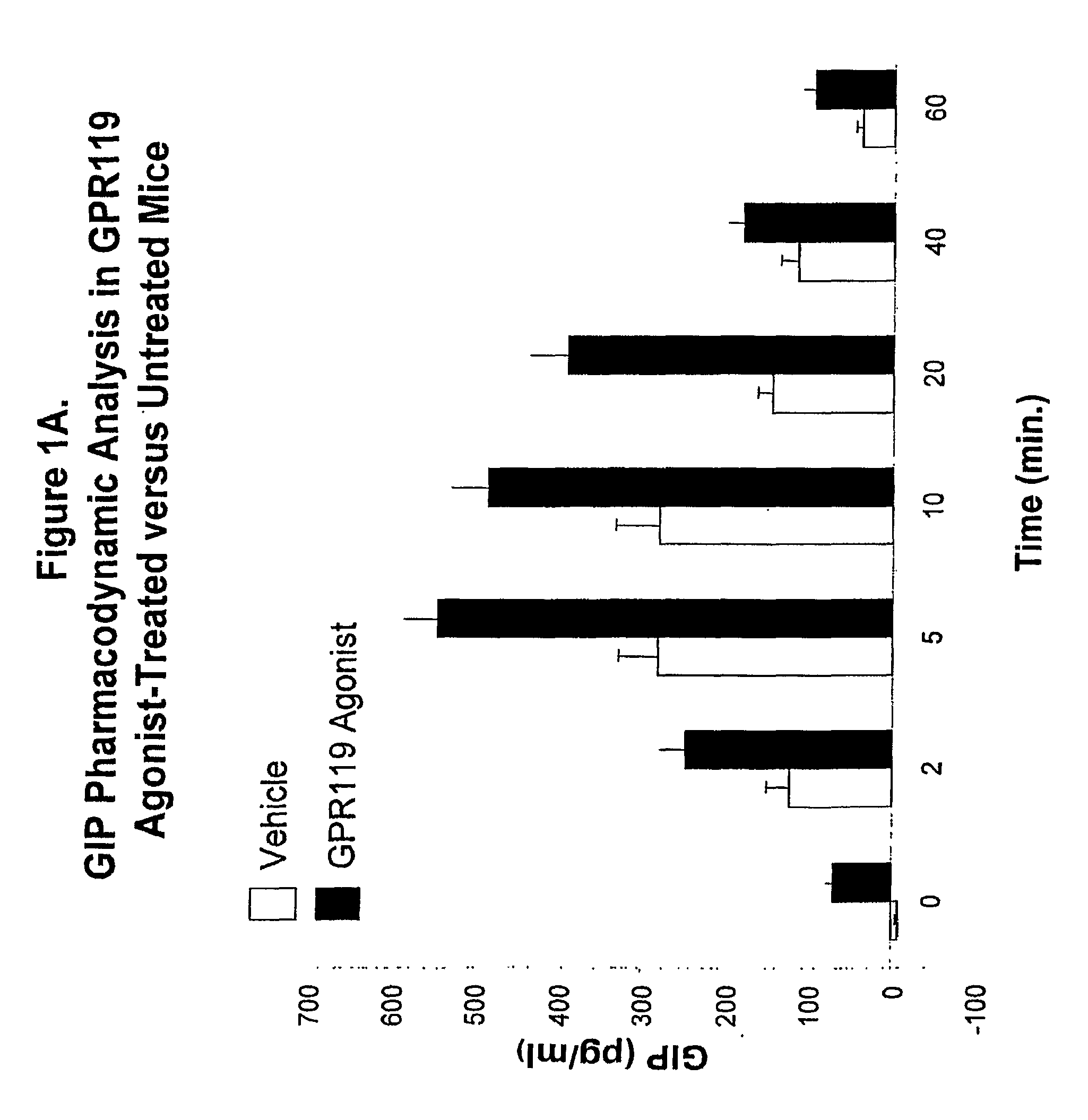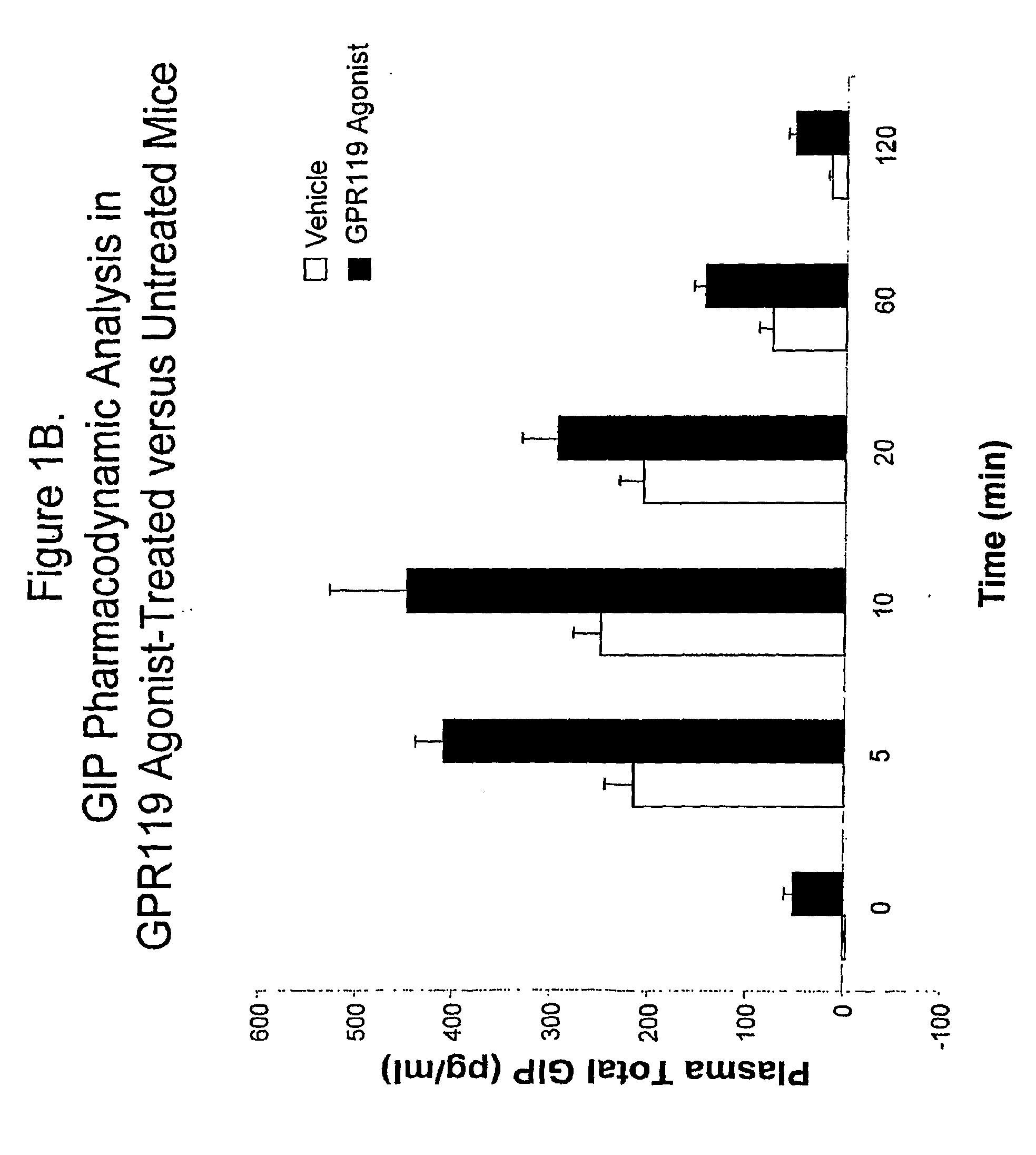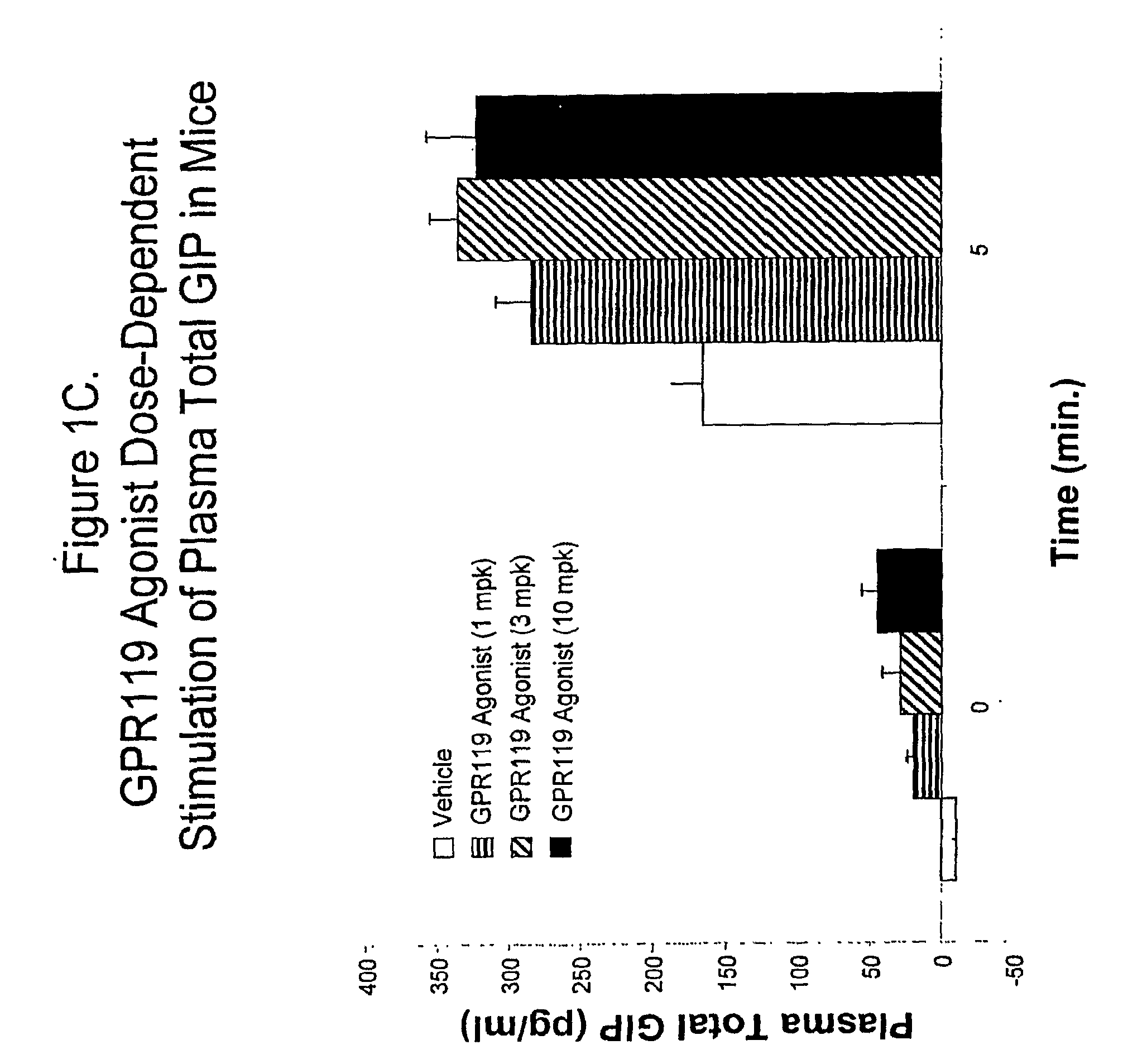GPR119 receptor agonists in methods of increasing bone mass and of treating osteoporosis and other conditions characterized by low bone mass, and combination therapy relating thereto
a technology of gpr119 receptor and agonist, which is applied in the direction of biocide, organic chemistry, drug composition, etc., can solve the problems of increasing the risk of fragility fracture in patients, affecting the quality of life of patients, so as to increase the gip level. , increase the gip level in an individual, increase the gip level
- Summary
- Abstract
- Description
- Claims
- Application Information
AI Technical Summary
Benefits of technology
Problems solved by technology
Method used
Image
Examples
example 1
Pharmacodynamic Analysis of an Effect of Administration of GPR119 Agonist on Blood GIP Level in Wild-Type Mice
[0811]A. C57blk / 6 male mice were fasted for 18 hours, and randomly assigned into fourteen groups with n=6 for each group. Mice were administered per orally with vehicle (PET; 80% PEG400, 10% ethanol, 10% Tween80) or with a GPR119 agonist in accordance with the present invention (Compound 1Z; (2-Fluoro-4-methanesulfonyl-phenyl)-{6-[4-(3-isopropyl-[1,2,4]oxadiazol-5-yl)-piperidin-1-yl]-5-nitro-pyrimidin-4-yl}-amine) at 20 mg / kg, as indicated in FIG. 1A. Thirty minutes after treatment, a glucose bolus at 3g / kg were delivered per orally, and plasma were collected at 0 (no glucose bolus), 2, 5, 10, 20, 40 and 60 minutes after glucose bolus. Plasma GIP levels were determined by using a rodent GIP ELISA kit purchased from Linco Research Laboratory [Rat / Mouse Gastric Inhibitory Polypeptide (Total) ELISA Catalog #EZRMGIP-55K], following instructions provided by the supplier. From the...
example 2
Effect of Administration OF GPR119Agonist on Blood GIP Level in GPR119—Deficient (Knockout) Mice Compared to Wild-Type Mice
[0814]A. GPR119-deficient male mice and wild-type littermates were fasted for 18 hours. Mice were administered per orally with vehicle (PET; 80% PEG400, 10% ethanol, 10% TweenSO) or with a GPR119 agonist in accordance with the present invention (Compound 1Z; (2-Fluoro-4-methanesulfonyl-phenyl)-(6-[4-(3-isopropyl-[1,2,4]oxadiazol-5-yl)-piperidin-1-yl]-5-nitro-pyrimidin-4-yl)-amine) at 20 mg / kg, as indicated (n=5). Thirty minutes after treatment, blood (100 microliter) was collected via retro orbital vein of the eye (time 0) followed by a glucose bolus at 3g / kg (per orally). Five minutes after delivering glucose, another blood sample (100 microliter) was collected (time 5 minutes), Plasma were collected after centrifugation and GIP levels were determined by using a rodent GIP ELISA kit purchased from Linco Research Laboratory [Rat / Mouse Gastric Inhibitory Polypept...
example 3
Effect of Administration of GPR119Agonist in Combination with DPP-IV Inhibitor on Blood GIP Level in Wild-Type Mice
[0816]An amount of a GPR119 agonist in combination with an amount of a DPP-IV inhibitor in accordance with the present invention can be shown to increase a level of GIP in the blood of an individual using the in vivo assay described below.
[0817]C57blk / 6 male mice are fasted for 18 hours, and randomly assigned into fourteen groups with n=6 for each group. Mice are administered per orally with vehicle (PET; 80% PEG400, 10% ethanol, 10% Tween80) or an amount of a GPR119 agonist in combination with an amount of a DPP-IV inhibitor. The experimental groups are analogous to those of Example 1 above. Each of the combined GPR119 agonist and DPP-IV inhibitor is used at an amount between 0.001 mg / kg body weight and 100 mg / kg body weight. Thirty minutes after treatment, a glucose bolus at 3g / kg is delivered per orally, and plasma is collected at 0 (no glucose bolus), 2, 5, 10, 20, ...
PUM
| Property | Measurement | Unit |
|---|---|---|
| bone mass | aaaaa | aaaaa |
| bone mineral density | aaaaa | aaaaa |
| bone strength | aaaaa | aaaaa |
Abstract
Description
Claims
Application Information
 Login to View More
Login to View More - R&D
- Intellectual Property
- Life Sciences
- Materials
- Tech Scout
- Unparalleled Data Quality
- Higher Quality Content
- 60% Fewer Hallucinations
Browse by: Latest US Patents, China's latest patents, Technical Efficacy Thesaurus, Application Domain, Technology Topic, Popular Technical Reports.
© 2025 PatSnap. All rights reserved.Legal|Privacy policy|Modern Slavery Act Transparency Statement|Sitemap|About US| Contact US: help@patsnap.com



